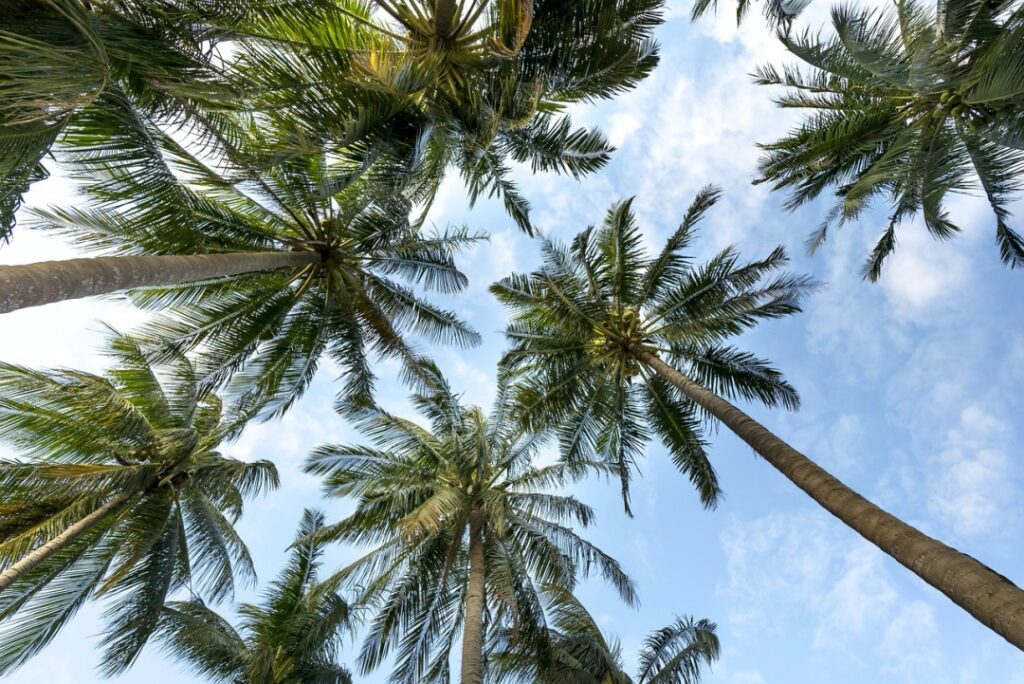
Mozambique
Coconut
Cocos nucifera

General Description / Cultural Significance
The scent of coconuts (C. nicifera) is well known to the people of Mozambique with trees growing in great abundance along the country’s Indian Ocean coastline where the largest sector of the population lives. The coconut is found in clusters atop leafy coconut palms making the fruit a staple of their diet and a key ingredient used to produce refreshing beverages. Coconuts are also a primary source of income for many inhabitants of the nation.
The trees have a lifespan of 100 years or more with peak production between 10 to 30 years old. People collect the coconuts to sell in the markets or deliver them to factories that manufacture over 100 different products from the fruit including oil, copra, sugar, and healthcare items.
At one point, coconuts provided 80% of jobs in the workforce in Mozambique. This coconut-heavy economy had been intact since the Portuguese Crown had colonized and ruled the country. In the latter half of the 1800s, the country saw its first coconut plantations. Slowly the coconut began to have a hold on the financial and cultural ways of the country. Through an amalgamation of capitalism, policy changes, and embeddedness into the nation’s society the coconut was able to stay supreme. Most believed it would always be this way but in the 1990s a deadly disease called coconut lethal yellowing disease began infecting coconut trees across the country.
Climate Change / Conservation Status
Coconut lethal yellowing disease (CLYD) was first documented in Mozambique at plantations in Cabo Delgado and Zambézia but did not have harrowing effects for another 20+ years. Yellowing disease is a fast and disastrous insect-related illness that completely kills the palm tree within 3-6 months of its first symptom. The blight begins with premature coconut droppings, followed by the yellowing and blackening of palm leaves, and ends with the entire top of the tree falling over on itself, leaving the once beautiful coconut tree to look like a “telephone pole.” The disease has cut the number of coconut trees in Mozambique in half.
Disease, though, is not the only force affecting Coconut trees in Mozambique. Thanks to climate change, rising water levels and flooding have wiped out entire zones of Palm trees leaving graveyards of former prosperity. Mozambique is working toward sustainable solutions, though, and has begun work with the UN Environment Programme to better take care of its citizens and valued natural resources such as the coconut. Plans and actions to fight flooding and erosion are in place as new coconut trees are being planted and creating walls to protect people and reforestation.
Sources
Adalima, J. (2022). From coconut to land: Changing livelihoods in Micaúne, Central Mozambique. Etnografica, 26(1), 29-50. https://doi.org/10.4000/etnografica.11067
Agrios, G. (2005). Plant Pathology (6th ed.). Elsevier.
(n.d.). Mozambique: Investing in Environment Pays off for the Poorest. OOH. https://www.unep.org/ru/node/269.
Statement provided by The Ambassador Extraordinary and Plenipotentiary and Permanent Representative to the United NationsPermanent Mission of the Republic of Mozambique to the United Nations.

